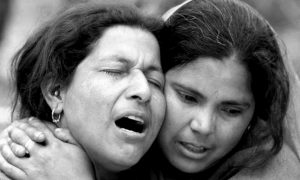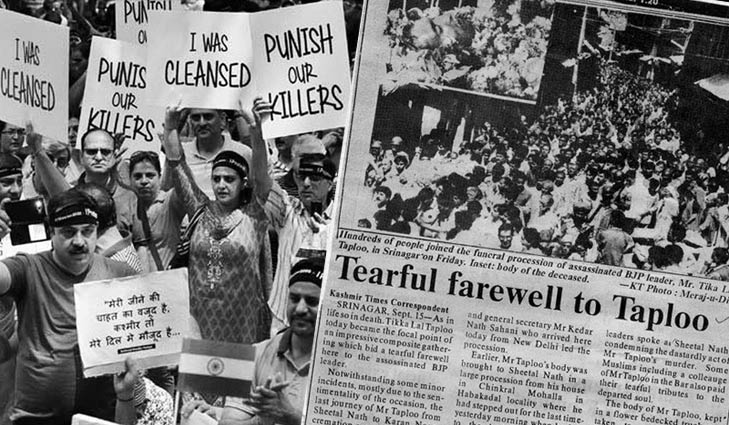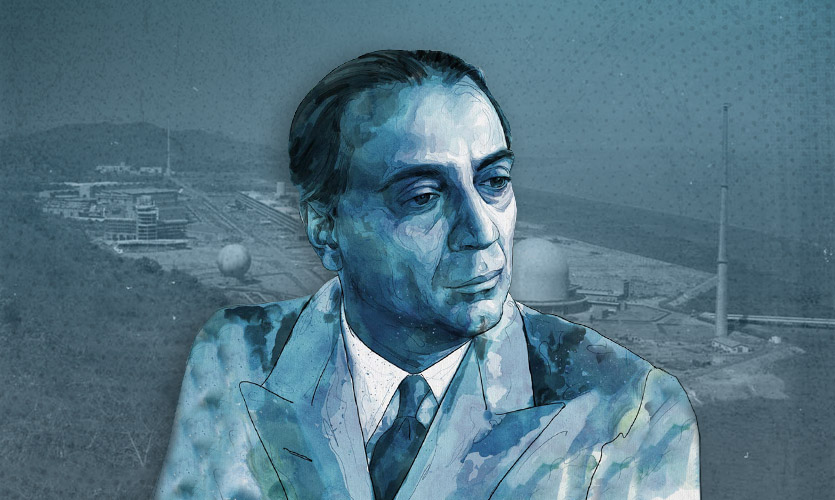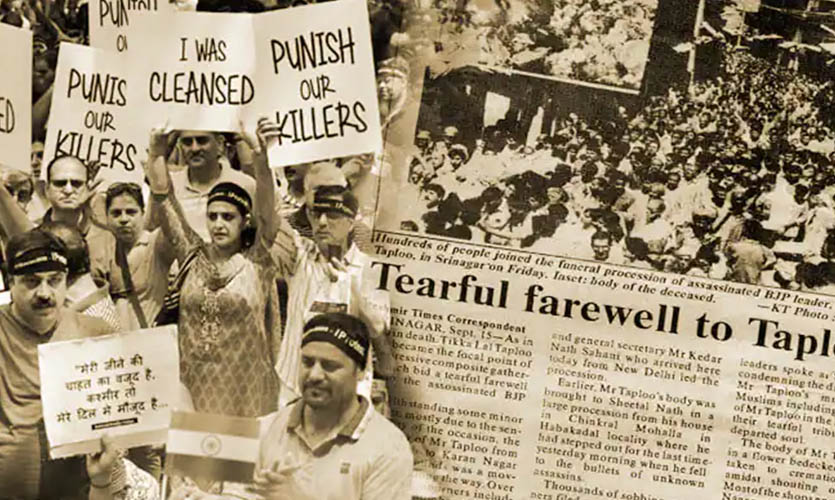January 19 is observed as ‘Exodus Day’ by the Kashmiri Pandit community. In 1990, this day marked the large-scale displacement of this community from Kashmir Valley after mosques across the region echoed with slogans of “raliv, tsaliv, ya galiv” – convert, flee, or die.
32 years since, Kashmiri Pandits continue to be refugees in their own country.
Migration
“As per the report of Relief Office setup in 1990 by the Government of Jammu and Kashmir, 44,167 Kashmiri Migrant families are registered who had to move from the valley since 1990 due to security concerns. Out of these, the count of registered Hindu Migrant families is 39,782,” states a press release issued by the Ministry of Home Affairs. In his documentary, ‘And The World Remained Silent’, Ashoke Pandit details the events that transpired before migration. According to corroborated evidence and various eyewitness accounts, Kashmiri Pandit activist and Advocate Pt Tika Lal Taploo was the first prominent casualty. He was shot dead in his house in Habba Kadal, Srinagar on September 14, 1989, by separatist militants. Justice (Retd) Neelkantha Ganjoo was shot at close range on November 4, 1989. Advocate Taploo and Justice Ganjoo were responsible for the conviction of Kashmiri separatist and co-founder of the militant organisation National Liberation Front (NLF) – Maqbool Bhat. As part of the organisation, Bhat had carried out various militant operations that resulted in the loss of many Hindu lives, for which he was sentenced to death. His political views were immensely influenced by the first elected prime minister of Jammu and Kashmir, National Conference leader Sheikh Mohammad Abdullah. The NLF was a precursor to the Yasin Malik-led Jammu and Kashmir Liberation Front (JKLF) founded by militant separatists Amanullah Khan and Maqbool Bhat, allegedly along with National Conference president and Lok Sabha MP Dr Farooq Abdullah.
On December 27, 1989, Advocate Prem Nath Bhatt was killed in front of several onlookers. The selected killings of these pillars of the Kashmiri Pandit community, snowballed into one of the biggest refugee crises in the region. Things only escalated after the kidnapping of Home Minister Mufti Mohammad Sayeed’s daughter Rubaiya. Some Kashmiri Pandits believe that Rubaiya Sayeed’s kidnapping was staged, and that it was a direct cause for the exodus as the militants released to ensure her safe return took arms against the minorities almost immediately. While charges were brought against ten JKLF militants allegedly involved in the kidnapping, as per a January 2021 report, 12 others remain absconding. Benazir Bhutto’s speech, in which she strongly asserted that “Kashmiris aren’t’ afraid of death because they are Muslims and have the blood of Mujahids and Ghazis coursing through their veins”, added fuel to the fire. She said, “Kashmiris are heirs of Hazrat Ali and Hazrat Omar (believed to be companions of the Islamic prophet Muhammad) … They know how to fight and live… Only one word will echo across villages, mosques and schools – aazadi (freedom).”
The 1990 exodus was the seventh such event in the history of Kashmir. While serving as the settlement commissioner of Kashmir from 1889 to 1895, Sir Walter Roper Lawrence authored a book called ‘The Valley of Kashmir’, which extensively explains the history, cultures, and traditions prevalent in the valley. He has referenced Dr M.L. Stein’s translations of author Kalhana’s Rájataranginí, the chronicle which was continued by the historian and poet Jonaraja. Sir Lawrence quotes Dr Stein, and writes, “Kashmir can claim the distinction of being the only region of India which possesses an uninterrupted series of written records of its history, reaching back beyond the period of Muhammadan conquests and deserving the name of real chronicles.” Kashmir’s political history is divided into four periods. Following the early period of Hindu Kings, the subsequent three – Salátíni Kashmír (period of Kashmír Musalmáns), Shahán-i-Mughlia (period of Mughals), and Shahán-i-Durání (period of Pathans) – were imbued with atrocities against the Hindu population of Kashmir. The book details accounts of the brutalities inflicted after every time Kashmiri Pandits decided to come back during times of peace. One such instance talks about Pathan ruler Asad Khan. “It was his practice to tie up the Pandits, two and two, in grass sacks and sink them in the Dal Lake. As an amusement, a pitcher filled with ordure would be placed on a Pandit’s head and Musalmáns would pelt the pitcher with stones till it broke, the unfortunate Hindu being blinded with filth,” narrates the book.
There are similar instances from 1990 and the following time, when bodies of Kashmiri Hindus were found floating in the Jhelum River, some of them with their hands and feet tied. There are first-hand accounts of the Kashmiri Pandits who got delayed for more than two days after the warning chant of “raliv, tsaliv, ya galiv” and had to witness male and earning members of their families being kidnapped and killed, and female members harassed. A Kashmiri Pandit migrant recalls, “I was attacked for wearing a bindi to college, my brother kidnapped for being a part of the RSS, and we lost our father to the heartbreak of having to leave the Valley. Some of our neighbours, our friends turned against us.” Kashmiri Pandit families who decided to stay back in their homeland have continued to face atrocities ever since.

Going Forward
In November 2019 Sandeep Chakravorty, the Consul General of India in New York promoted the Israel model as a strategy to rehabilitate the Kashmiri Pandit community. He said, “I don’t know why we don’t follow it. It has happened in the Middle East. If the Israeli people can do it, we can also do it.” The Israel model would imply the establishment of separate designated areas for resettlement of the exiled community, therefore, guaranteeing security and safety. However, India has historically distanced itself from any similarities that are drawn between the two countries. During his visit to India in February 2004, Silvan Shalom, the Israeli deputy prime minister and foreign minister at the time, stated that the ‘security fence’ India was building at the Line of Control, was like the wall built by Israel to protect itself. Prime Minister Atal Bihari Vajpayee had rejected the comparison and refused to support Israel in protesting the International Court of Justice’s investigation in the ‘security fence’ matter.
In 2016, Prime Minister Narendra Modi drew active comparisons between the military prowess of both countries. After the success of military operations targeting terrorist bases across the LoC were carried out by the Indian Army in September that year, PM Modi had said, “Our army’s valour is being discussed across the country these days. We used to hear earlier that Israel has done this. The nation has seen that the Indian Army is no less than anybody.” The current administration seems to be working hard towards rectifying the situation and rehabilitating migrant Kashmiris. The process of obtaining permanent residency and becoming a domicile of Jammu and Kashmir state has been simplified for those who had to leave. To encourage the community further, the government has also made provisions for housing, employment, and cash assistance according to the policy for Return and Rehabilitation of Kashmiri Migrants to Kashmir Valley, designed under the prime minister’s packages in 2008 and 2015. However, there are fears that the government does not have the community’s best interest at heart. “I think the return of Kashmiri Pandits is being instrumentalised to justify a settler-colonial project in Kashmir,” said Mona Bhan, an associate professor of South Asian Studies at Syracuse University, to the Middle East Eye. The publication said that as per the professor, “there remains a deep anxiety among Kashmiri Pandits that their pain is being weaponised to further the goals of the BJP-led government”.
“The government seems to be doing what it can… more than others have done in 32 years… But we still can’t go back,” says a Kashmiri migrant, who wishes to remain anonymous. He further said, “I have acquired the necessary documents for myself and my family in the hope that my children will be able to experience the beauty of our homeland someday. But I don’t wish to go back unless the conditions are conducive.” When asked what he would define as the appropriate conditions for returning to the valley, he says, “Unless there is a substantial increase in the Hindu demographic inhabiting the region it is out of the question. We know that the community needs to be united in standing up to claim what is rightfully ours, but most of us may not be able to find the courage to do so unless our safety is guaranteed.” Additionally, he says, “Separate areas for our community to live, away from the Muslim population that drove us out, must be a priority for all parties to thrive or at least survive peacefully.”
International Ignorance
India has always been expected to exercise restraint in matters of Kashmir and continue to lead the way for peacebuilding activities with Pakistan. Despite wrongdoing by Pakistan, and historical evidence dating back decades proving Afghan atrocities on Kashmiris, the US continued to arm the countries in its bid to end Soviet rule. The documentary by Ashoke Pandit highlights that the 9/11 World Trade Center attacks in 2001 could have been avoided if the US had paid heed to the plight of Kashmiri Pandits. “One cannot talk about smoking out global terrorism, and then give a billion dollars to a country which has redefined terrorism into a deadly art form,” it observes.
In 1994, when Pakistan had convinced the Organisation of Islamic Countries to move a resolution to sanction India over alleged human rights violations in Kashmir, the United Nations Commission on Human Rights (UNCHR) did not lose a moment before summoning India. Although India was successful in stopping the issue from going to a vote and the accusations were never proven, it was treated as an international matter. The 1990 exodus, however, remains an internal matter without any repercussions faced by Pakistan’s state sponsored terrorists infiltrating Indian borders. Pakistani deep state is also believed to be smuggling bombs and IEDs into a number of border states in India as part of the Karachi project. The project was initiated at the beginning of the previous decade in which Pakistan trained religious fundamentalists teach the impressionable youth in India to make and detonate ammonium nitrate bombs, thus, carrying out cross-border terrorism under the pretext of home-grown terrorism.
For India, the forced migration of Kashmiri Pandits is comparable to the 1984 anti-Sikh riots and the 2002 Gujarat riots. However, the community remains a quiet minority, with calls for justice issued across the world and liberal groups for the current inhabitants, including stone-pelters or as former Pakistani PM Pervez Musharraf liked to call them, for the “freedom fighters” of the valley. All the humanitarian effort that they hold India accountable for, it is high time that the international leadership takes cognisance of the cruelties faced by this ancient civilisation and works towards bringing them relief, and their perpetrators to justice.
The Horus Eye is a weekly column written by Divya Bhan analysing current affairs and policies. This column does not intend or aim to promote any ideology and does not reflect the official position of The Sparrow.
Also read: Are The Recent Killings In Kashmir Dying Embers Of Prolonged Terror?










